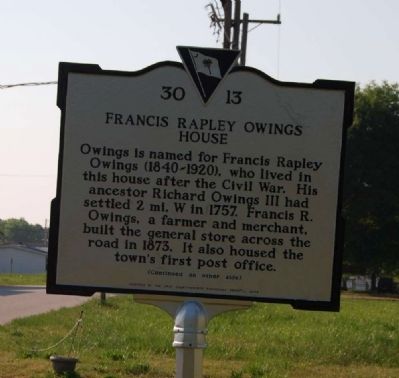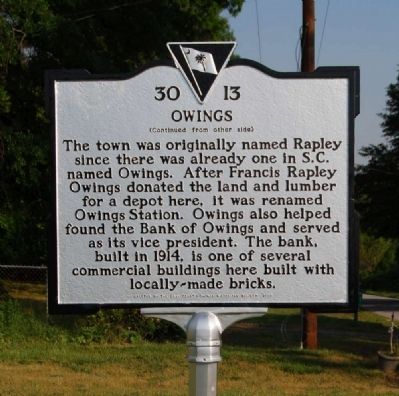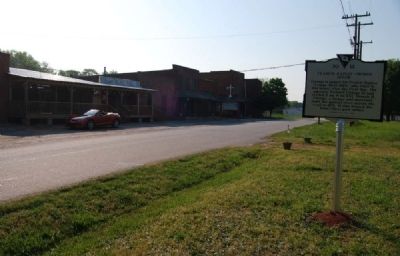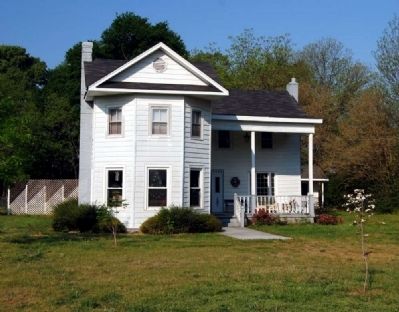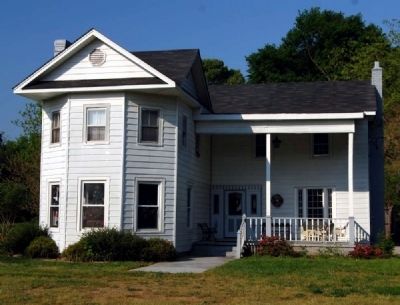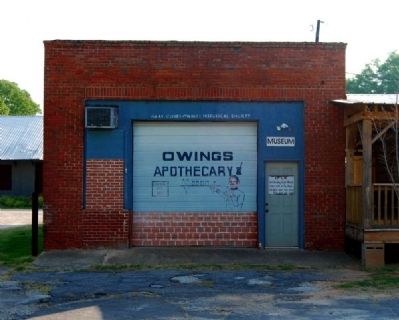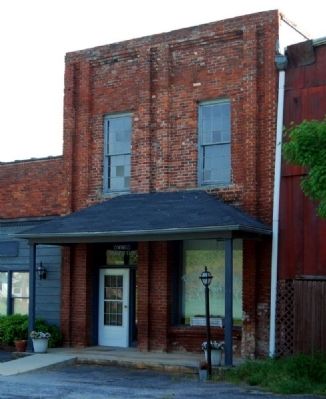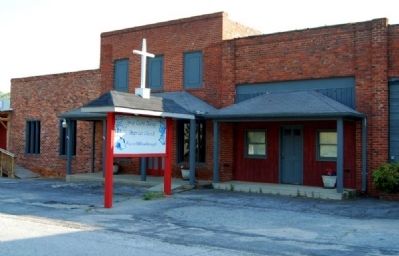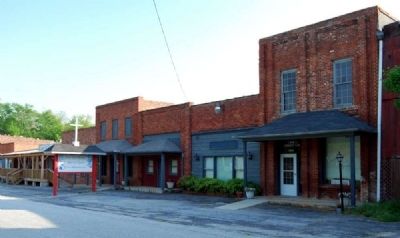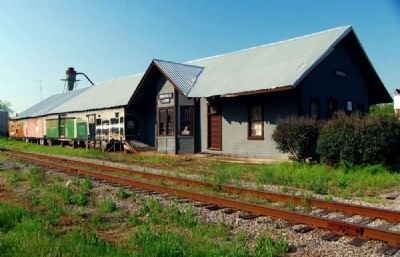Owings in Laurens County, South Carolina — The American South (South Atlantic)
Francis Rapley Owings House / Owings
Erected 2009 by Gray Court-Owings Historical Society. (Marker Number 30-13.)
Topics. This historical marker is listed in these topic lists: Notable Buildings • Settlements & Settlers. A significant historical year for this entry is 1757.
Location. 34° 37.833′ N, 82° 8.04′ W. Marker is in Owings, South Carolina, in Laurens County. Marker is on North Old Laurens Road, on the right when traveling south. Touch for map. Marker is at or near this postal address: 4706 North Old Laurens Road, Gray Court SC 29645, United States of America. Touch for directions.
Other nearby markers. At least 10 other markers are within 6 miles of this marker, measured as the crow flies. Gray Court Owings Consolidated High School (approx. one mile away); Laurens County Training School (approx. 1.9 miles away); Dials Methodist Church (approx. 2.9 miles away); Young’s School (approx. 5.1 miles away); Charles G. Garrett Interchange (approx. 5.2 miles away); Cherokee Boundary (1767) (approx. 5.3 miles away); Fountain Inn Cemetery (approx. 5.4 miles away); Fountain Inn Rosenwald School (approx. 5.7 miles away); Clayton "Peg Leg" Bates (approx. 5.8 miles away); Fountain Inn Cotton Mill / Woodside Mill and Village (approx. 5.8 miles away).
Also see . . . Gray Court-Owings Historical Society. The Gray Court-Owings Historical Society was organized in February, 2001 with fourteen dedicated members and has grown to thirty members. (Submitted on May 6, 2010, by Brian Scott of Anderson, South Carolina.)
Additional commentary.
1. Francis Rapley Owings
Francis Rapley Owings is founder of the Village of Owings in Laurens County. He is an ex-Confederate soldier, and at the age of seventy-nine still carries himself with some of the military bearing of his youth. He enjoys good health, and his long career has been a constant exemplification of public spirit, industry and good works.
He was born on a farm a mile west of his present home April 3, 1840, a son of Jonathan and Sarah (Childress) Owings. His great-grandfather, Richard Owings, was also a native of Laurens County and the son of a native Virginian of English ancestry. The grandfather, William Owings, was born in Laurens County and married a Miss Parsons. Jonathan Owings, father of the Owings business man, was born in Laurens County and married Sarah Childress, a daughter of Richard Childress, a native of South Carolina and of Dutch lineage. Richard Childress married Sarah De Jornett. There were six children in the family of Jonathan Owings and wife. All grew to mature years: Richard Leander died while a Confederate soldier; Elizabeth is deceased; Jonathan De Jornett, deceased, was a Confederate soldier and afterward a farmer; Joanna, deceased; John Thomas, living near Owings Station; and Francis Rapley, living at Owings.
Francis R. Owings spent three years in the Confederate army and was present in many battles but never wounded. After the war he began farming, and in 1873 established a store which became the nucleus of the present town of Owings. He was engaged in business there for many years, and is still active in affairs. He helped organize the Bank of Owings and is still on its board of officials as vice president.
In 1859, at the age of nineteen,
he married Susan Abercrombie. She was born January 27, 1840, and was a daughter of Richard and Elizabeth Childress Abercrombie. Her grandmother Abercrombie was a Woods before her marriage, and her grandmother Childress was an Adams before marriage. Of the six children born to Mr. and Mrs. Owings one died at the age of two years. Those still living are Sarah Elizabeth, Eliza Jane, Susan Evaline, Wayne Marvin and George Walton. The son Wayne is a Methodist minister, while George is a physician, farmer and banker. Mr. and Mrs. Owings have given the best years of their life to the allegiance of the Methodist Church. He is a demitted member of the Masonic order. (Source: History of South Carolina, Volume 4 by Yates Snowden (1920), pgs 103-104.)
— Submitted May 6, 2010, by Brian Scott of Anderson, South Carolina.
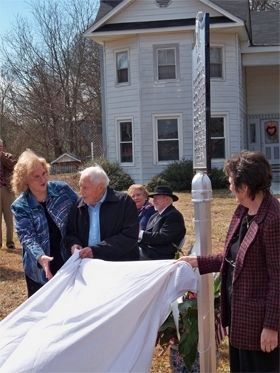
Photographed By Laurens County Chamber of Commerce, February 23, 2010
5. Historical Marker Dedication
Dr. Rembert Owings, 102, assists Sarah Jane Armstrong and Dianne Culbertson of the Gray Court-Owings Historical Society at the unveiling of a historical marker at the Francis Rapley Owings home in the Owings Community on February 23. The marker tells the story of the Owings family and their arrival in Maryland from Wales and their eventual settlement in the area with now bears their name. Dr. Owings is the grandson of Francis Rapley Owings (1840-1920), the man for whom the community is named. The marker stands in front of the Owings home on Old Laurens Road where Francis Owings lived from the Civil War until his death.
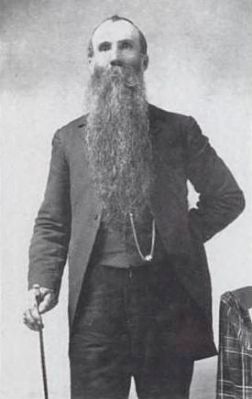
Laurens County by Libby Coats Rhodes, Carol McMahan Chambers
6. Francis Rapley Owings
(1840-1920)
(1840-1920)
Francis Rapley Owings, born in 1840, was a well-known and respected citizen from the Owings area of the county. In fact, Owings Station was named in honor of this gentleman. A Confederate veteran, Owings served in Company A, Sixth South Carolina Calvary.
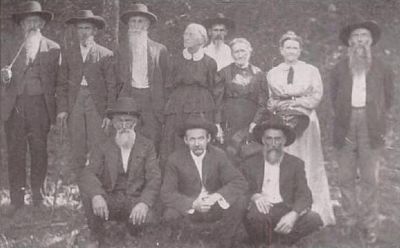
Laurens County by Libby Coats Rhodes, Carol McMahan Chambers
7. Founding Family of Owings Station
From left to right (front row): John Putman, Issac Owings and Thomas Owings; (back row): Archbals Creswell Owings, Martin Owings, Jonathan "Jot" Owings, "Sallie" Ranson Owings, James Burdette, Nancy Dial Owings, Charlotte Willis Owings, and Rapley Owings, who was founder of the town of Owings.
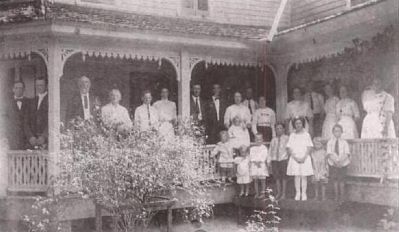
Laurens County by Libby Coats Rhodes, Carol McMahan Chambers, 1912
8. Owings Anniversary Celebration
Francis Rapley Owings and his wife, Susan Abercrombie Owings, gather with family members in 1912 to celegrate their 52nd wedding anniversary. Mr. and Mrs. Owings are standing on the left of the front porch of the Owings home.
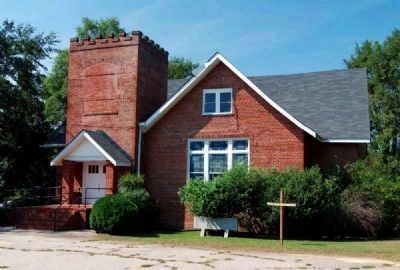
Photographed By Brian Scott, September 5, 2009
16. Owings United Methodist Church
Built in 1921 in the vernacular Norman style. Has the same plan and similar, though less developed elevations as the Patterson Chapel United Methodist Church in Lanford. This plan may have been a stock pattern used by the Methodists during this period for many small country churches.
Credits. This page was last revised on September 18, 2020. It was originally submitted on May 6, 2010, by Brian Scott of Anderson, South Carolina. This page has been viewed 3,394 times since then and 101 times this year. Photos: 1, 2, 3, 4, 5, 6, 7, 8, 9, 10, 11, 12, 13, 14, 15, 16. submitted on May 6, 2010, by Brian Scott of Anderson, South Carolina.
